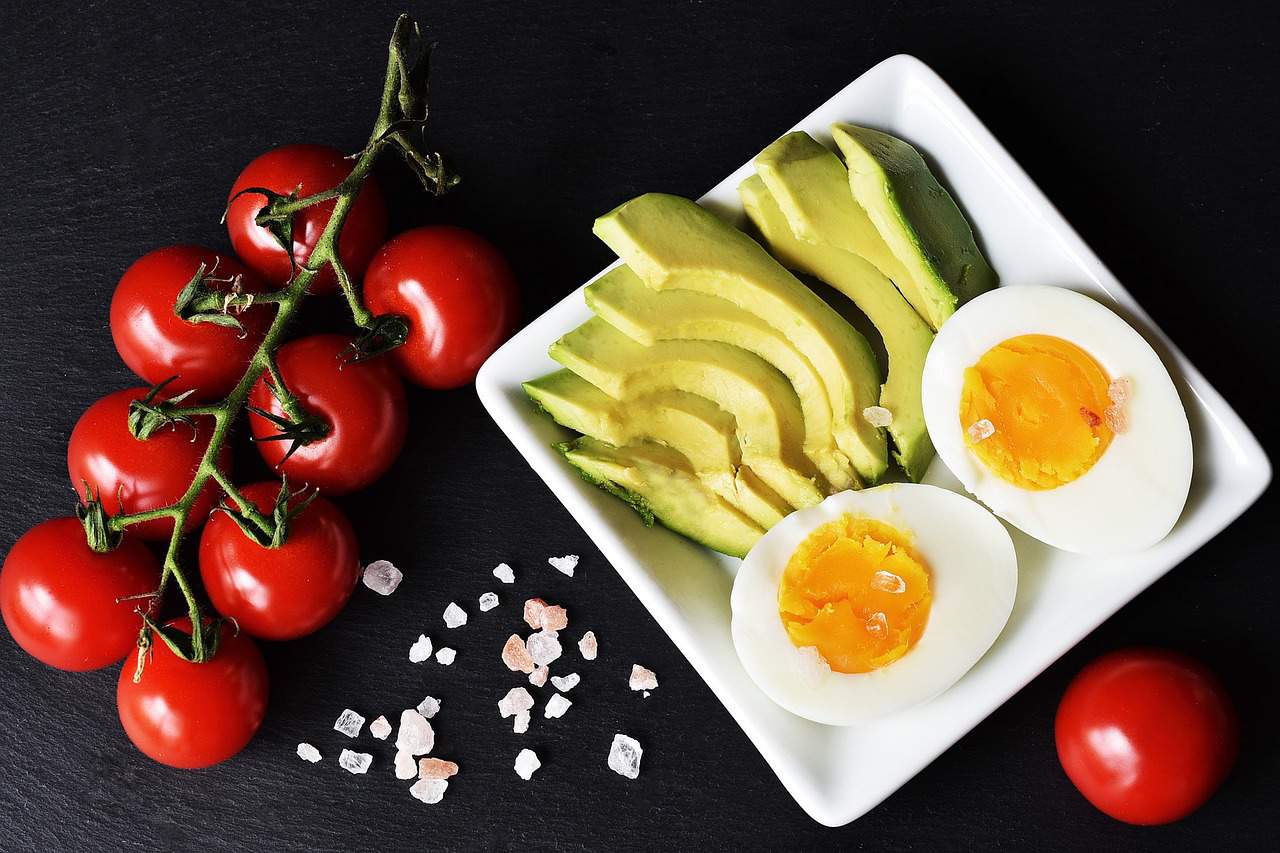- PhentermineLearn more about phentermine and how to get the most from your weight loss journey.
- ResourcesAdditional information and tools to help you make the most of your effort.
- AlternativesLearn more about the most popular weight loss medications and science-backed supplements
What Can You Eat On Keto Diet?
Published on December 9, 2024

Get ready to rock the Keto lifestyle by **seriously slashing carbs** and loading up on fats – the healthy kind, of course! This swap isn’t just a one-way ticket to Keto benefits; it’s a total game-changer for your overall wellbeing. Curious why everyone’s buzzing about keto? Now’s your shot to discover the secret of feasting on fats to shed pounds, and believe me, your body’s gonna be over the moon. Hang tight, and you’ll find out why choosing fats over carbs could be the greatest switcheroo on your food list.
This diet is primarily promoted for the purpose of helping people lose weight, even though it was originally developed by a group of scientists to help treat patients who suffered from epilepsy. With more than 66% of the American adult population now considered overweight or obese (1), it is no wonder that diets like the Ketogenic diet are becoming such popular trends.
An estimated 7.6% of the adult population in the country is considered to be extremely obese, which puts their health at significant risk and predisposes these individuals to a much higher risk of diabetes, heart disease, cancer, and many other conditions that can have a negative impact on their quality of life.
Even though the Ketogenic diet has become a popular trend in the dieting and general weight loss industry, it can be difficult to adopt this diet. There are also risks that need to be taken into account, and potential short-term side-effects that you may need to be aware of if you are thinking about following such a diet. In this post, we look at what the Ketogenic diet is, how it works, what it does to your body, and we consider foods to eat and foods to avoid on a diet.
What Is A Ketogenic Diet And How Does The Diet Work?
Let’s start by looking at what exactly a Ketogenic diet is, what the diet entails, and what this particular way of eating will do to your body. A Ketogenic diet is a low-carb diet option. It shares some similarities to other diets, but there is one particular factor about this low-carb diet that is unique as well – and that is the fact that the diet aims to place the body into ketosis. This is done by a much more significant restriction in the intake of carbohydrates, followed by a higher intake of healthy fats.
When the body enters ketosis, fats are broken down, and the liver then converts the fat into ketones – molecules that essentially replace glucose in the bloodstream. While the body is used to turning to glucose in order to generate energy – not only energy for you to be able to run and get through the day but also energy for cells to perform their functions – a Ketogenic diet teaches the body how to use fats for this particular purpose instead.
This is how the Ketogenic diet is supposed to help a person achieve certain health benefits. The western diet relies more-and-more on refined products, processed foods, and sugary foods. These are all considered to have an adverse impact within the body – ultimately leading to low-grade inflammation, inflammatory bowel conditions, and contributing to obesity, as well as type 2 diabetes.
When these “bad” foods are removed from a diet, then the body is provided access to healthier food options that will rather have anti-inflammatory and anti-obesity effects instead.
It should be noted, however, that both good and bad fats exist. Even though the body may still be able to enter ketosis when bad fat options are chosen, such as foods that are high in monounsaturated fats, trans fats, and saturated fats in general, this will not yield the same potential health benefits – including the ability to possibly lose weight more effectively – compared to developing a Ketogenic diet plan that focuses on healthy fats instead.
Can A Ketogenic Diet Really Help You Lose Weight?
There are different ways in which a Ketogenic diet may be able to help a person lose excess fat in their body and reach their goal weight. Scientists are still doing extensive research to understand exactly how this entire process works and how exactly the state of ketosis benefits a person in terms of losing their excess weight.
Since protein intake is increased in most cases when a person switches to a Ketogenic diet, and there are many healthy food options, including some vegetables, that are loaded with fiber in this particular type of diet, one of the most common explanations would be better satiety. With fiber and protein, you will find that you do not feel hungry as soon after having a meal compared to before you had these particular meals and decided to follow this diet.
With improved satiety, binge eating is something that can usually be effectively avoided. If you do not feel hungry between the main meals of the day, then there will be little need to indulge in a packet of potato chips or perhaps an energy bar.
There would be times when hunger does strike, however – in these cases, packing a handful of nuts can be a very healthy alternative to those energy bars, donuts, and other bad and unhealthy foods that you usually opt for in cases where you feel the need to eat when it is not time for the next meal.
In one study (2), scientists explain that many controversies has been examined over the last three decades in terms of whether people should follow low-carb or low-fat diets when they are trying to lose weight. The study explains that the answer really lies within certain factors, such as a person’s glucose metabolism, and that each diet may work more effectively for a selected group of individuals. For some people, a low-carb diet can do wonders when it comes to losing weight. Another group of people, however, may find that a low-fat diet can provide them with more effective weight loss results.
One study (3) did note more significant benefits when comparing a low-carb and a high-carb diet. The study involved a total of 68 participants, divided into two groups. The one group were advised to consume a low-carb diet, while the other group was provided a meal plan for a high-carb diet. At the end of the study period, scientists found that the reduction in body weight was similar among both diets.
There were, however, greater improvements in the glucose/insulin ratio, blood triglyceride levels, and fasting blood insulin levels among those participants who were asked to consume a low-carb diet.
Another study (4) compared the effects of a low-carb diet to those of a low-fat diet. They found that while both of these diets were able to assist the participants in reducing their overall body weight, greater improvements in certain factors related to metabolic syndrome were noted among participants in the low-carb diet group. In particular, levels of low-density lipoprotein (LDL cholesterol) and total cholesterol were reduced more significantly among this group of participants. There was a greater elevation of high-density lipoprotein (HDL cholesterol) noted in these individuals as well.
What Can You Eat When Following A Ketogenic Diet?
While most people would think of a Ketogenic diet being restricted – since they will have to start eliminating many of the foods they are used to eating from – the diet can still be made delicious and nutritious. The key here is for you to ensure you understand exactly what foods you can include in your diet – and to then use your own cooking skills and creativity to come up with ways to combine those foods into healthy and balanced meals.
With a Ketogenic diet, your intake of carbs is restricted quite a lot, but your intake of healthy fats is increased.
Some examples of foods that fall within the appropriate categories that make them good options for a Ketogenic diet include:
- Seafood, such as octopus, oysters, clams, mussels, squid, and mussels.
- Fish like mackerel, salmon, and sardines.
- Vegetables that are low in carbs, such as spinach, Brussel Sprouts, kale, cauliflower, and broccoli.
- Cheese
- Poultry, including both chicken and turkey.
- Meat products, preferably grass-fed options.
- Avocados
- Eggs, preferably omega-3 enriched varieties.
- Cottage cheese
- Greek yogurt (unsweetened plain yogurt)
- A variety of seeds, like sesame seeds, pumpkin seeds, chia seeds, and flaxseeds.
- Nuts, such as almonds, Macadamia nuts, pecan nuts, walnuts, Brazil nuts, cashews, and Pistachios.
In addition to these food options, it is also important to note that when cooking food, the three oil varieties that you should opt for include avocado oil, coconut oil, and olive oil. All three of these oils are known to be high in healthy fats and low in unhealthy fats, and they will not have a significant impact on your carbohydrate intake for the day.
What You Should Not Eat While Following A Ketogenic Diet
When following a Ketogenic diet, it is important to note that when your carb intake becomes too high, your body will not remain in ketosis. The fact that your body is in ketosis is why you are experiencing the benefits associated with a Ketogenic diet – for this reason, it is also important that you understand the particular foods you should not eat while following this diet. This will help to prevent your body from being kicked out of the ketosis state and may help ensure you can continue to experience all of these great benefits that a Ketogenic diet has to offer you.
When you are going to be following a Ketogenic diet, be sure to take note of the following food groups and varieties – they should not be included in your diet if you wish to maintain the ketosis state that you will be placing your body in.
- Foods that are high in sugar, such as soda, agave, honey, sports drinks, and maple syrup. Products sweetened with sugar should also be avoided.
- Grains, along with foods that are based on grains. This includes granola, rice, cereal, wheat, pasta, and corn.
- The majority of fruits will also be avoided due to their high carbohydrate content. Apples, oranges, and bananas are often considered to be at the top of the list when it comes to looking at fruits to avoid on a Ketogenic diet.
- Tuber vegetables, along with the food products on the market made from these vegetables. This would include potatoes and yams, along with French fries and those bags of potato chips.
It is also important to consider the oils that you will be cooking with. We mentioned previously that you should consider using olive oil, coconut oil, and avocado oil. Other oil options tend to be high in fats, which can be useful for a Ketogenic diet, but these are the unhealthy kinds of fats that lead to inflammation and other issues in the body.
Conclusion
With the Ketogenic diet becoming a popular trend among people who are looking to lose weight, it is important that anyone interested in the diet understands both the pros and cons. Additionally, it is also important to take note of the foods to be included in a Ketogenic diet, along with the particular food options that should be excluded. This will make setting up a meal plan and the process of meal prepping significantly easier and will help you avoid making inappropriate decisions that could kick your body out of ketosis.
References
(1) https://www.niddk.nih.gov/health-information/health-statistics/overweight-obesity
(2) https://www.ncbi.nlm.nih.gov/pmc/articles/PMC5672079/
(3) https://www.ncbi.nlm.nih.gov/pubmed/8968851
(4) https://www.ncbi.nlm.nih.gov/pmc/articles/PMC3530364/


